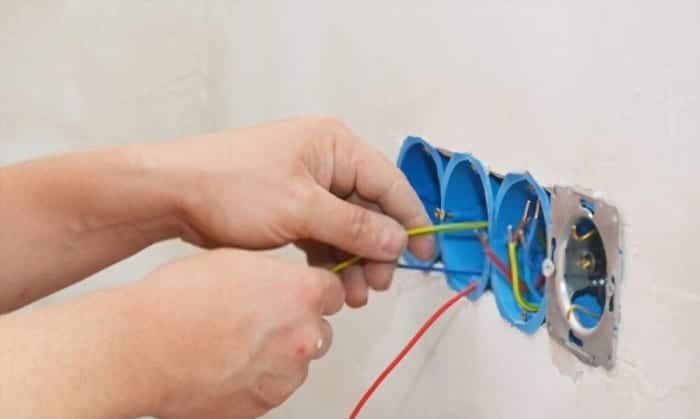Contents
Currently, electricity is a fundamental part of everybody’s life but not many homeowners have a good understanding of wiring schemes. Unsurprisingly, once it comes to daisy chain vs. parallel, different people have different opinions. If you want to know more about those wiring schemes in order to make a good call, my article can help you out. Here, you can find all the information that you must keep in mind regarding daisy chain and parallel.
Note: Regardless of your decision, do not attempt to wire things together unless you have the right tools and skills. Electricity is as dangerous as it is useful and messing around wires is just asking for trouble in most of the cases. It’s not unheard of for miswiring to inflict serious injuries so you should exercise extreme caution while working on wires. If you lack confidence, feel free to hire professional electricians to handle the wiring in your stead.
An Analysis Of The Schemes
Daisy Chain

In layman’s terms, daisy chain is a wiring scheme in which receptacles are daisy-chained together. The receptacles are linked “end to end” and each terminal pair is used to carry electric current from one device to the next in the same circuit. When people flip the switch, the electric current will flow in a single path from the first device to the second, then to the third, and so on. Daisy chain used to be quite common in the past but nowadays, it’s overshadowed by other schemes.
On average, daisy chain requires fewer cables than other schemes which keeps the setup neat and clean. In addition to that, the wiring process won’t involve a lot of work if you opt for the daisy chain scheme. That being said, having the current flowing a single path has its disadvantages: all it takes is one disruption and devices will instantly lose power. Needless to say, daisy chain is by all accounts ill-suited for essential and delicate arrangements.
Parallel

As the name suggests, in parallel wiring, receptacles are wired in parallel and along multiple routes. Unlike daisy chain, the flow of the current in parallel wiring is divided so that devices receive power separately. A lot of homeowners now elect to use parallel as it’s proven to be reliable and dependable.
Being the exact opposite of daisy chaining, the scheme requires a lot of cables and is complex to set up. On the other hand, it offers the benefit that most devices will remain powered in the event of receptacle failure. For example: Because the current goes to device A, device B and device C on different paths, device B and device C have no problem functioning if device A were to lose power for some reason.
Comparison
| Daisy Chain | Parallel Chain | |
| Layout | Single line | Multiple lines |
| Complexity | Simple | Complicated |
| Appearance | Clean, fewer cables | Rough, more cables |
| If Current Gets Interrupted | All devices down the line can lose power | Only the linked device loses power |
All in all, the ideal scheme for you depends on your personal needs and requirements. If you seek something that is easy to set up and causes no visual clutter, daisy chain is for you. But if you place reliability and dependability above all else, parallel is the way to go.
Questions And Answers
Is it unwise to daisy chaining power strips?
Not necessarily. Sometimes, daisy chaining can refer to plugging power strips or extensions that lead into other power strips. That allows people to connect more electrical appliances to the socket. While there is a risk that the wall socket can be overloaded, you will be fine if you stay well below the maximum load.
How come people keep getting confused about daisy chaining and parallel?
Well, at the end of the day, both schemes bring about electricity so to the average person, the details do not matter. Furthermore, some electricians refer to daisy chain as “wiring in series” though technically that is not correct. In daisy chain setups, power flows through wires and connectors and not through devices that are plugged into the receptacles themselves.
Are there any cases where daisy chain is the superior scheme?
As mentioned in the article, the major flaw of daisy chain is that if one part of the chain loses power, everything below it suffers the same fate. However, this can in fact be prevented by using a ground-fault circuit interrupter (or GFCI) receptacle to protect the “downstream” receptacles. Another way to make use of daisy chain is a power strip. By using one single switch, you can control multiple appliances but it’s best used for On/Off toggle devices such as light bulbs.

Hi music fan! I am Jeff. Hope that you enjoy some stuff I shared here in my personal blog.
About myself, Currently I am in charging as Artist Manager/Music Supervisor at 72 Music Management. I did managed album to Grammy Award in 2017 with 7 Nominations from 2014-2020 and had the opportunities to work with : A.J. Croce, Blind Boys of Alabama, Bobby Rush, Dom Flemons, Dustbowl Revival, Sarah Grace
Governor of the Memphis Chapter of The Recording Academy is one of a award that I am lucky to achieved.
